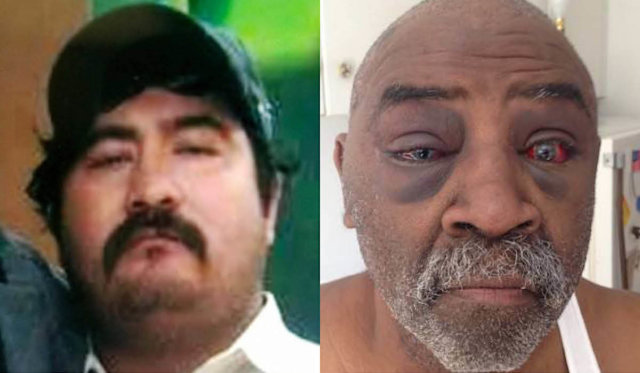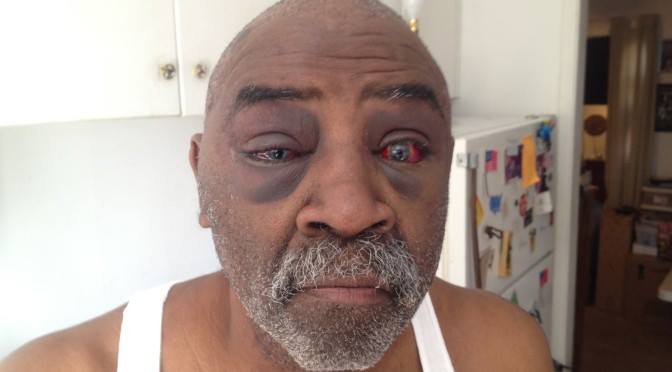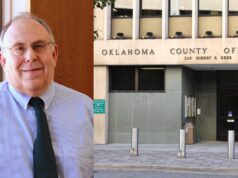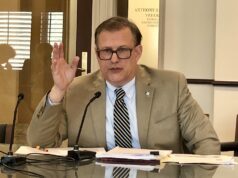
On Sept. 19, two Oklahoma City Police Department officers responded to a hit-and-run complaint at an intersection near the 200 block of Southeast 57th Street. Minutes later, 35-year-old Magdiel Sanchez, a deaf and nonverbal man with no criminal record and no involvement in the reported hit and run, would be shot dead by OKCPD Sgt. Christopher Barnes.
Sanchez’s death marks the fifth fatal shooting of civilians by police in Oklahoma this year, according to data compiled in an ongoing project of The Washington Post. As of Tuesday, WaPo data indicate police have shot and killed 766 people in the U.S. during 2017.
Almost four years earlier, a similar scenario played out near Moore, Oklahoma. On Jan. 3, 2014, Oklahoma Highway Patrol officers responded to a complaint of a hit-and-run accident in which an SUV had backed into a car at a red light. After pursuing the suspect, the officers would eventually pull Pearl Pearson Jr., a 64-year-old deaf man, forcibly from his driver’s seat after they observed him reaching for something inside the vehicle. (Police dashcam video is mainly useful for audio.)
Pearson would need medical treatment after being punched in the face and struggling during an ensuing physical altercation outside the vehicle that lasted long enough for the original two officers to call for backup. Pearson was treated at a hospital for swollen eyes and a dislocated shoulder before being booked into the Oklahoma County Jail.

Less than two months later, Oklahoma County District Attorney David Prater would clear the three officers involved in the incident of any wrongdoing. Prater stated in a letter (embedded below) that responding officers “… used normal, tactical bodily force as they attempted to control Pearson …” and that “… the level of force employed in this incident was lawful and justified.”
 Loading...
Loading...
Deaf man charged, case later dropped
The troopers confronting Pearson were unaware he was deaf until they handcuffed him and placed him in the back of a patrol vehicle. Although he claims he was reaching for a card that explained his inability hear before troopers forcibly removed him from his vehicle, Pearson was still charged with a misdemeanor count of resisting arrest. Three years later, Pearson’s trial was slated to occur Jan. 23, 2017. In the meantime, Pearson had hired a lawyer, and, as the years passed, sought to raise funds to help cover his legal fees in the meantime.
Perhaps ironically, money would be the deciding factor in Prater eventually dropping the charge against Pearson less than a week before the scheduled date. On Aug. 6, 2014, Pearson’s attorney, Scott Adams, filed a motion requesting six sign-language interpreters to come from Texas and assist in translating to and from Pearson, who was not fluent in American Sign Language.
Although it was agreed that three interpreters from outside of Oklahoma would suffice for facilitating Pearson’ trial, the estimated taxpayer expense approached $40,000. In a motion to dismiss the misdemeanor case, Prater stated:
It is the District Attorney’s responsibility to be a good steward of the taxpayer’s money. Though it is important to prosecute matters to promote public safety and assure that the State of Oklahoma’s laws are enforced, the financial burden placed on the State to prosecute a matter is a legitimate consideration; especially as in this case, the matter is a misdemeanor.
Special Judge Donald Easter agreed, and, three years after it began, Pearson’s case was dismissed.
Back to Magdiel Sanchez
Unlike Pearl Pearson, Magdiel Sanchez had neighbors who witnessed his encounter with local law enforcement. In news reports, these witnesses claim they were shouting to the armed officers in front of him — one with a Taser drawn and the other with a pistol — that Sanchez could not hear their commands.
Their cries went unheeded as Sanchez approached the troopers while carrying what neighbors described as his “walking stick”: an approximately two-foot length of pipe with a leather strap on one end that Sanchez carried to fend off stray dogs while walking around the neighborhood. Both officers fired their weapons, ending Sanchez’s life. Neither officer was wearing a body camera.
Before and after
The context of the officers’ action deserves noting: Just two days prior, seven law enforcement agents were injured in Chickasha, Oklahoma, during what the town’s police chief described as “gun battle” in the course of serving a warrant for a 61-year-old male at a residence.
Still, two days after Sanchez’s death, the American Civil Liberties Union condemned in a statement the “warrior culture” they believe contributes to escalating violence between police and suspects:
Merely failing to follow commands is an unacceptable defense for the use of lethal force. We have allowed a dangerous culture of ‘us vs. them’ to fester among our law enforcement professionals. This killing speaks directly to a warrior culture in which the very people police officers are sworn to protect come to be viewed as the enemy. This culture assumes that an officer’s command, regardless of validity, is more important and more valuable than a human life.
Locally, the Black Lives Matter OKC group posted a statement calling Sanchez’s death “completely unjustifiable,” and a rally was organized for Sept. 24 in which peaceful protesters walked from OKC City Hall to police headquarters to demonstrate against the shooting.
Perhaps in the only silver lining emerging from the Sanchez incident, the Oklahoma Association for the Deaf posted Sept. 27 on Facebook that OKCPD had “… reached out and agreed to training on interacting with Deaf and Hard of Hearing citizens, which will include cultural compentency [sic].”
As a matter of policy, OKCPD’s homicide unit internally investigates all fatal officer-involved shootings, according to Oklahoma City Police Capt. Bo Mathews. On Sept. 30, however, attorneys for the Sanchez family called for the criminal investigation into OKCPD shooter Barnes to be transferred to Oklahoma Attorney General Mike Hunter’s office, the Oklahoma State Bureau of Investigation and the U.S. attorney’s office.
As of Tuesday, Sanchez’s death remains under investigation by the Oklahoma City Police Department.





















